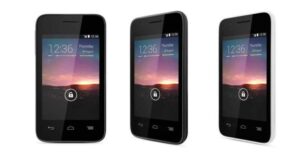From the windmills grinding our forebears’ grains to the microchips powering smartphones, technology has always had one core purpose – to make our lives easier. And as these tools have become more sophisticated and further woven into the fabric of society, its ability to assist us has only grown. As such, technology has been vital in helping deliver new levels of accessibility to people with disabilities. And while the tools have been impactful, there’s still a lot of work that can be done to further level the playing field to ensure everyone has access to the same support.
Some inclusive technologies have become mainstream, for example, such as the move to chatbots and virtual services that make it easier for people to access the support they need. But that first step – accessing the internet – can present several roadblocks for individuals with disabilities if the nature of their impairments makes computer use impossible or very challenging.
Tearing down barriers with tech
As a society, we have already made considerable steps in supporting people with disabilities – from wheelchairs to prosthetic limbs to cochlear implants. But technology can also enable us to break down barriers and reach out to underserviced communities in a more efficient and affordable way. And thanks to innovations such as unified comms, machine learning and the Internet of Things (IoT), we can now provide better support and open up opportunities to more members of society than ever before.
But we can all benefit from increased accessibility to technology. This is the logic behind ‘the curb-cut effect’ – when disability-friendly features are used and appreciated by a larger group than the people they were designed for. In our increasingly busy world, we’re seeing that innovations designed to help those who cannot read or write can also have significant benefits for people who are really busy, travelling or just prefer to listen and speak content rather than type.
Vodafone recently launched the Connected Living project, with the goal of giving people with learning disabilities greater independence, choice and access to technology through IoT-enabled devices and personalised digital services. There are several features that are part of the Connected Living project, including managing smart plugs, locks and lights, call support and activity sensors. The initiative has been co-designed with people with disabilities with the targeted aim of improving the quality of life for millions of people with learning disabilities, as well as their families and carers.
Advances like these make a massive difference in the lives of people with disabilities, opening up numerous possibilities. But these sorts of developments often require money, time and energy to put in place, and on a commercial level, the market can appear too small to be worth it. So, this is where the technology industry can play a role in ensuring that we’re still progressing in these areas.
How technology can help companies embrace accessibility
Like all groups, disabled people have various talents, skills and experiences. So, embedding accessible technology into the core of a company’s culture and systems can help these enterprises to both employs and get the best out of brilliant disabled staff, whilst also maximising their ability to engage and do business with customers with disabilities.
Find out more about how Vodacom promotes a culture of inclusion



